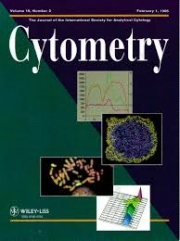Posted on March 21, 2017
Source: Cytometry

Erin N. Shirk Brian G. Kral Lucio Gama
Polychromatic flow cytometry is a useful tool for monitoring circulating whole blood monocytes, although gating strategies often vary depending on the study. Increased analyses of the myeloid system have revealed monocytes to be more plastic than previously understood and uncovered changes among surface markers previously considered to be stable. The myeloid system has also been found to have disparate surface markers between mouse, human, and non‐human primate studies, which further complicates examination between species. This study has found bright Toll‐like receptor 2 (TLR2) expression to be a consistent surface marker of circulating whole blood monocytes in humans and two species of macaques. Furthermore, within our pigtailed macaque model of HIV‐associated CNS disease, where monocyte surface markers have previously been shown to reorganize during acute infection, TLR2 remains stably expressed on the surface of classical, intermediate, and non‐classical monocytes. Our findings demonstrate that TLR2 is a useful surface marker for including all monocytes during other phenotypic changes that may alter the expression of common surface receptors. These results provide a practical tool for studying all types of monocytes during inflammation and infection within humans and macaques. © 2017 The Authors. Cytometry Part A Published by Wiley Periodicals, Inc. on behalf of ISAC.